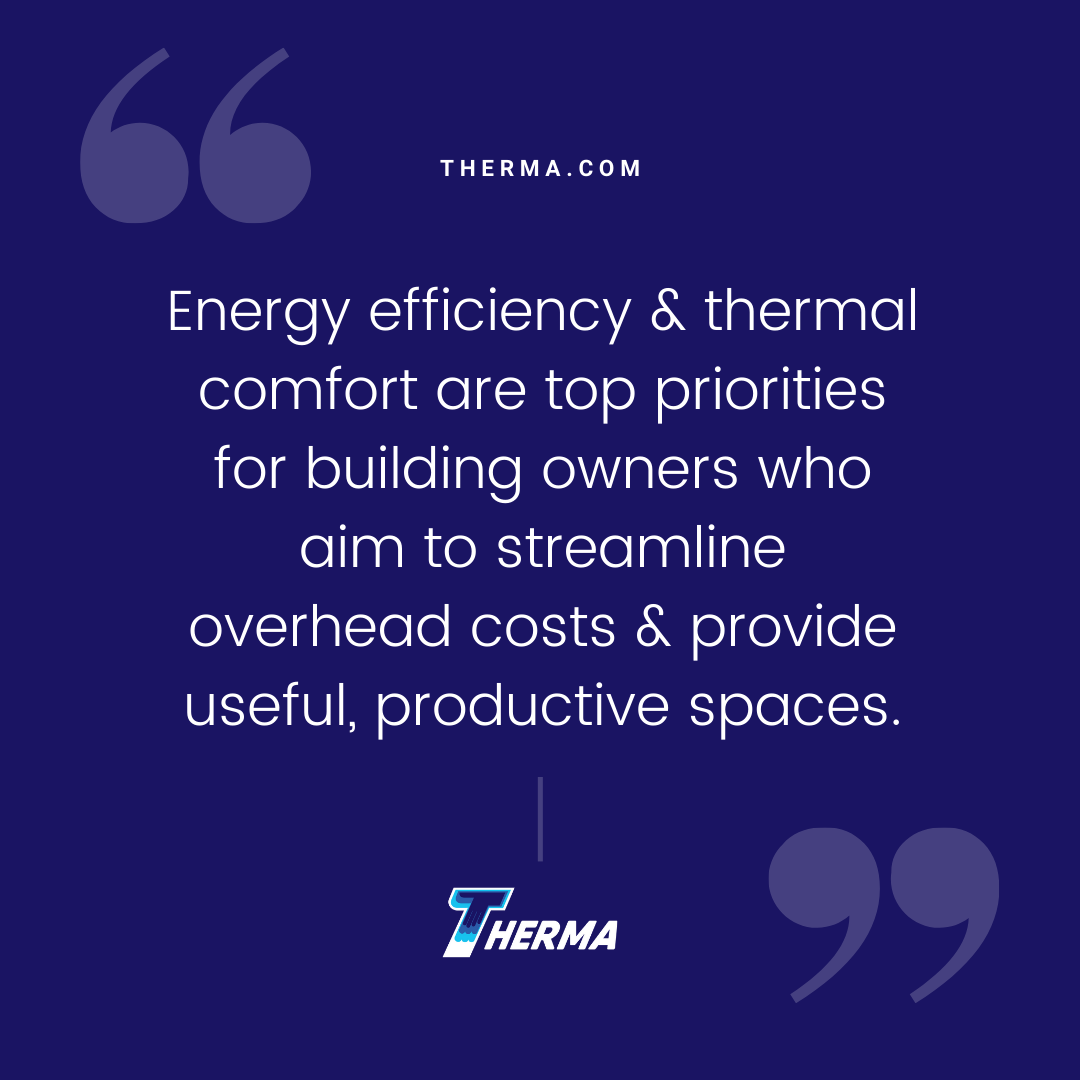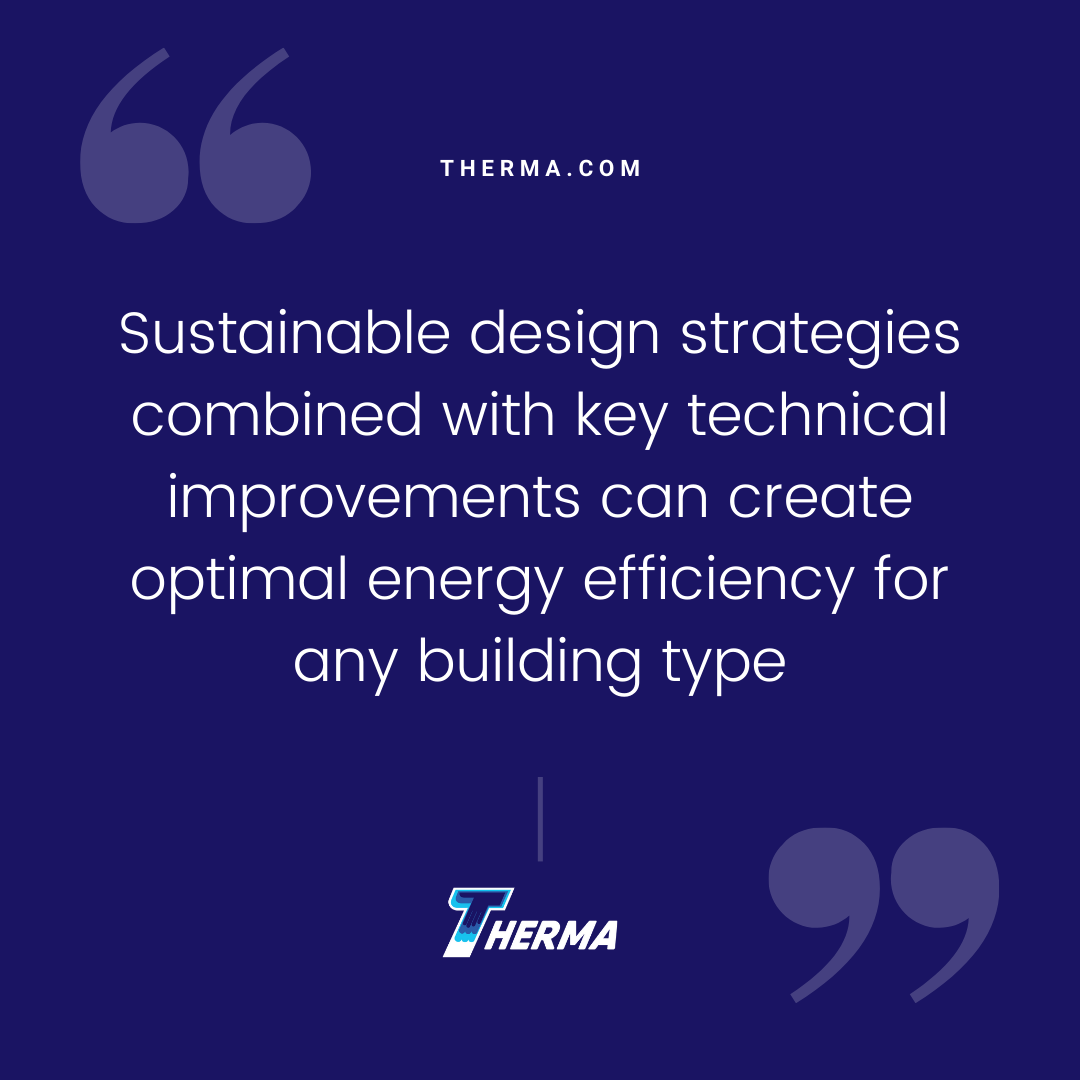by Ali Kriscenski
Energy efficiency and thermal comfort are top priorities for building owners who aim to streamline overhead costs and provide useful, productive spaces. In geographic locations that experience high temperatures and solar exposure, either seasonally or year round, a focus on building performance strategies can help create savings and other benefits.
Vernacular architecture embodies design strategies that help protect occupants from the local weather and climate. Expansive porches, awnings, vented shutters, orientation, and even building shapes are all indicators of the regional elements that can challenge a building’s energy efficiency. Many of these strategies can become part of modern buildings to help reduce solar gain or other challenges that drive up energy consumption.
Modern buildings are often designed to rely on mechanical systems for heating and cooling. This is a result of space optimization and construction efficiency priorities. However, sustainable design strategies combined with key technical improvements can create optimal energy efficiency for any building type.
1. Building Envelopes and Insulation
The integrity of a building’s exterior elements and insulation are central to energy efficiency. Types of roofing, window quality and insulation materials all play a role in keeping weather out and conditioned environments intact. Building envelopes that allow heat to enter or leave conditioned spaces increase regular operating costs. They can also be the cause of damage, such as the formation of ice dams and water infiltration.
An easy way to check the level of insulation and building envelope performance is to have an energy audit conducted by a qualified service provider. This evaluation will help identify improvements and estimate the long-term savings that they can provide.
Residential buildings can utilize the Home Energy Rating (HERS) system and commercial buildings can use Energy Star. These systems assess the performance of a building’s envelope and energy systems in order to help owners make decisions towards reduced energy use and savings.

2. Energy-Efficient HVAC Equipment
A key factor in building performance is the efficiency of its HVAC systems. If your equipment is outdated or in need of maintenance, it may prove cost-effective to invest in improvements. An HVAC professional can perform an assessment to see how well your system is running and if it is the right equipment for the type and size of your building.
3. Building Automation Systems
One way building owners can control operating costs and increase energy efficiency is to use programmable thermostats and automated controls. Systems that can run on a set program that anticipates cooling requirements based on the season, occupancy levels and time of day.
The best way to find the right building automation system for your facility, office or home is to enlist an expert. There are numerous factors that affect a building’s energy demands, including location, age, program and design. A building automation systems professional will be able to identify all the factors particular to your building and identify how to condition spaces efficiently.
4. Considerations for Specialty Businesses
Some buildings have more dynamic operational environments, for instance those that house manufacturing processes, healthcare or laboratories. These types of building uses have additional ventilation and HVAC requirements.
In hospitals, labs, and manufacturing facilities, some areas can require specific pressurization, temperature or humidity levels. These requirements can be for clean rooms, isolation areas, or regulated storage, such as vaccines. Automated system controls not only allow consistency in the room conditions but also allow for monitoring and alerts when parameters are exceeded.
Building a Comprehensive Strategy
An important part of any building operational strategy is to consider how different building systems and components work together. This will help the decision-making process lead to more successful outcomes. A building’s energy efficiency depends on many variables that cannot be assessed individually, out of context. For example, a building’s envelope, including roofing, windows, doors, and insulation will affect its equipment performance. With an organized and comprehensive approach, enlistment of professional expertise where needed, and clear objectives, you can optimize your building’s energy performance for long-term benefits.
Ali Kriscenski was trained in high-performance building design at Boston Architectural College. She has worked with leading architecture and construction firms in NYC and New England, and served on the executive team at Forest Stewardship Council International. She was Managing Editor at Inhabitat and has worked pro bono for the Green Building Institute, ISEAL Alliance and Habitat for Humanity.
Sources
Energy Star – Energy Star Technical Reference
U.S. Energy Information Administration – Energy Use in Commercial Buildings








